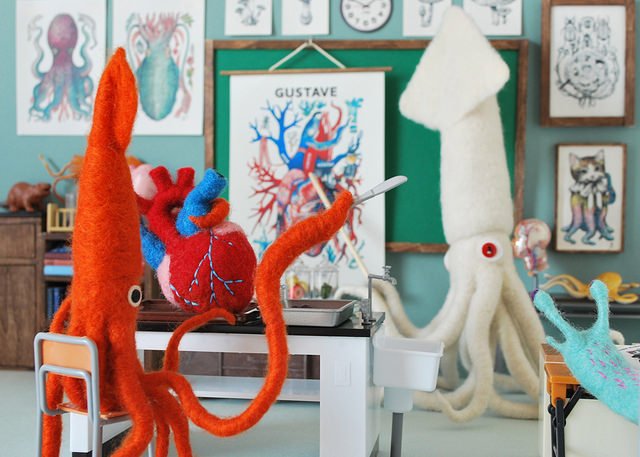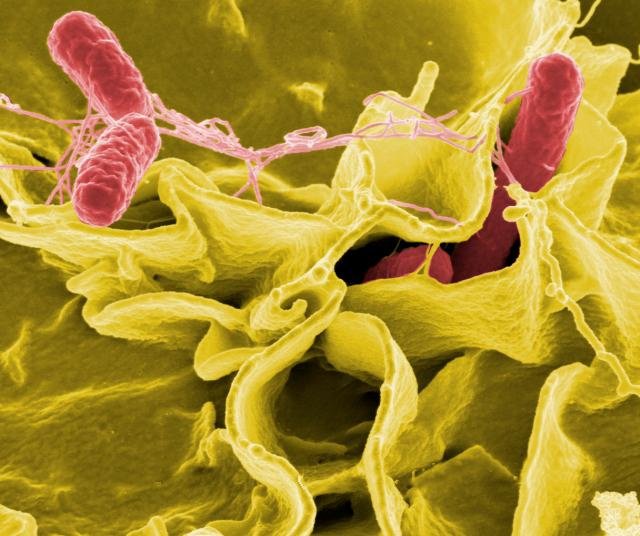Throughout history, each revolutionary medical discovery brought us closer to understanding the complex mysteries of the human body.And the science of how to keep people healthy has come a long way. Over the past several thousand years there’s been a lot of experimentation, a lot of “might as well cut this off” or “how ‘bout you drink this random elixir?” or “let’s put leeches here and here and see what happens in a few days.”
There’s been a lot of fad diets and fad procedures and medicines. And there’s been a whole lot of error.
From the haughty position of a sterilized, medicalized 21st century US, a lot of those missteps seem pretty absurd and gruesome, but they all (at least by showing what doesn’t work) played a role in the world’s major health advancements.
When medically sound practices were discovered and taught, millions and billions of lives were saved and improved.
It’s important to recognize just how visionary major health advances were in their time.
It’s also important to remember that health is a cumulative science. Advances build upon one another. The more that is learned about the human body, the more likely new advances will be made. That’s why advances in the past few decades and in the next few decades will dwarf all that has come before.
With that in mind, here are 7 major health advances:
Understanding anatomy and physiology
You can’t treat human health if you have no understanding of the human body. Hence the study of anatomy and physiology, the unraveling of the body’s mechanisms and arrangement.
Human anatomy has been understood in spurts. For most of scientific history, people could only thoroughly study (i.e. examine the inner workings) corpses, when the body no longer functioned, and with no sophisticated tools of measurement. And in many cultures the study of corpses was banned (because of some fairly understandable social customs). So there were many interpretations, some surprisingly accurate, others bizarre.
For instance, while the Egyptians recognized the centrality of the heart and its role in carrying blood, they thought “the breath of life” and the “breath of death” traveled through vessels attached to the ears.
The study of human anatomy really kicked into high gear in the 17th and 18th century, when the printing press spread ideas and initiated collaboration and cadavers (corpses) became widely available to medical schools.

The 20th century, though, is when all the vague discoveries of the past began to be perfected, especially after the introduction of the XRay, MRI and other body scanning devices combined with the refinements of studies such as molecular biology and endocrinology.
This understanding is the foundation of all health.
Time for a quiz: can you name the different systems of the body? (Yeah….me neither but everyone should probably get to know them).
Discovering bacteria and other microorganisms
For every one cell in the human genome, there are 100 bacterial cells in and on the body. The “microbiome,” as it is now called, is just as essential as any of the other human systems. It trains white blood cells, breaks down food, extracts and optimizes nutrients and even controls some brain activity.
And there are countless more bacteria in every environment you encounter. They’re literally everywhere--except they’re also nowhere. At least that’s what people thought for most of human history because bacteria are invisible to the human eye.
So the most violent bacterial epidemics of all time, including the Black Plague in the mid 1300s, were blamed on all the wrong things, such as Jews poisoning drinking wells.
Bacteria was finally spotted in the 1660s by a Dutch cloth merchant named Anton van Leeuwenhoek. He wanted to better see the quality of his thread, so he developed a magnifying glass more powerful than anything else in existence and, naturally, saw small organisms when he looked through it.

Salmonella bacteria
But Germ Theory--the understanding that bacteria can be linked to some diseases--arose in the 1870s when two scientists, Louis Pasteur and Robert Koch, discovered the process of pasteurization--boiling a substance to kill the bacteria and protect it from spoiling.
Penicillin and antibiotics
Bacteria ravaged populations until antibiotics hit the scene--tuberculosis, pneumonia, cholera and many other diseases were all reined in with antibiotics.
A team of scientists, Alexander Fleming, Ernst Chain and Howard Florey, created Penicillin in 1940, but it was so hard to produce at first that there was always a chronic shortage.

Eventually, Penicillin’s structure was revealed by Dorothy Hodgkins and John Sheehan soon made the first synthetic version.
After this breakthrough, it’s no exaggeration to say that antibiotics have saved billions of lives.
Now, humanity has gotten to the point where antibiotics are OVERprescribed a lot of the time. This has led to a new league of super bacteria resistant to basic antibiotics that will be a major foe in the next few decades.
One interesting place doctors have turned for the next wave of antibiotics is dirt, where the possibilities are vast (more on this another time).
Vaccines
You can’t mention antibiotics, without also mentioning vaccines, a way to build-up antibodies for a disease, thrwarting it before it can strike.
The list of contagious diseases that have been halted and nearly eradicated by vaccines is long and includes: polio, measles, diphtheria, pertussis (whooping cough), rubella (German measles), mumps, tetanus, rotavirus and Haemophilus influenzae type b.
The first inkling of a vaccine occurred in 1796 when the English doctor Edward Jenner prevented a boy from getting smallpox.
Today, the world is on the cusp of eradicating polio, which is now isolated to just two countries--Afghanistan and Pakistan--having just been exterminated in Nigeria (ok, technically it needs to go two more years to be considered exterminated in Nigeria but I’m an optimist!).

Some people will say that vaccines are unsafe and should be avoided. This line of thinking has zero basis in science and is dangerous to the health of all humans.
Pain relief
Back in the day, if you had to get your leg amputated because of, say, bacterial gangrene, you might be given some liquor to drink for relief.
And then you’d gnash your teeth and grunt and scream and hold for dear life to the edges of your bed.
Thankfully, the science of pain relief has come a long way.
Anesthesia was successfully used in the mid 1800s and it, along with morphine, dramatically reduced the horror of surgery. And limiting pain can also save lives-- extreme shock and trauma can kill a person.
More mundane pain relief became broadly available following the formalization of aspirin in 1895.
But humans have always been resilient when it comes to finding ways to numb pain. Opium from the poppy seed has been used for thousands of years.
Women’s health
Even today, women’s health issues are routinely undermined and regarded skeptically--just look at the latest attacks on Planned Parenthood in the US and the dearth of women’s health facilities all over the world.
These are the fruits of millennia of sexism.
But advances have been made, mostly in the 20th century. Adoption of basic hygiene made childbirth far more safe. Still, giving birth is risky in many countries around the world. Nearly 300,000 women died while giving birth in 2013 and millions more contracted illness and infections.

The tampon became commercially available in the US in the 1920s and 30s, allowing women to better control their periods and reducing the stigma associated with it. Premenstrual syndrome was also better understood during this time. Previously, some pervy doctors insisted that vaginal massages performed by said doctors were the cure for health issues faced by women.
And anything women experienced that men never experienced was generally attributed to “hysteria.”
Those insane days are mostly far behind us--mostly.
The first birth control clinic opened in the US in 1916, but a long conflict of securing women’s health ensued and continues to this day. The first birth control pill appeared in 1960, but women still go through labyrinths to obtain appropriate birth control.
As is clear, the world has a long way to go to ensure quality healthcare for all women.
Mental health
The mystery of the mind has eluded humanity for most of its existence. As a result, some really bad and unethical mental health treatments have been devised.
Starting 7,000 years ago, it was believed that drilling a hole in a person’s skull would cure mental illness.
Bleeding a patient and inducing vomiting were once treatments. Sometimes, suffering people were iced and chained up.
In the 18th century Europe, the mentally ill were locked away and isolated.
And the 19th and 20th century saw the rise of barbaric use of lobotomies and crude electroshock therapy.
Although mental health is still a fledgling field and is regarded skeptically by a lot of humanity, advances have been made.

Pharmaceuticals, although inconsistent, have relieved the plight of many, many people suffering from mental illnesses.
The rise of therapy and meditation has also helped many patients.
In the years to come, the growing field of neuroscience will surely lead to much more targeted and effective tools. Until then, countries have to stop the wholesale imprisonment of the mentally ill and end awful practices like chaining the mentally ill to trees.
I’ve broken bones, gotten viruses and bacterial infections and had other everyday illnesses. I can only imagine what it would have been like to face such things without modern medicine.
Needless to say, I’m grateful for all the scientists and doctors who have worked to illuminate human health.
But many people around the world are deprived of the most modern techniques and suffer needlessly.
As Global Citizen explores the theme of Health this month, learn what you can do to help everyone receive adequate healthcare.
You can start by going to TAKE ACTION NOW to call on world leaders to get the world immunized.
The views expressed here are not necessarily those of each of the partners of Global Citizen.